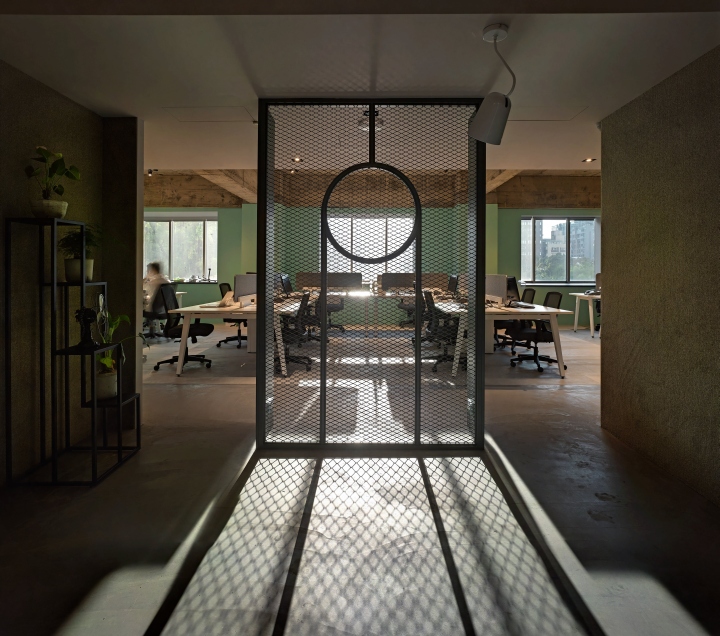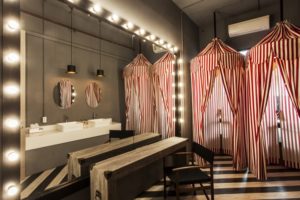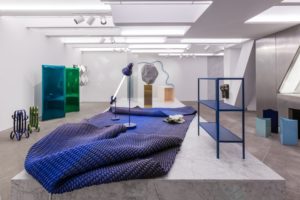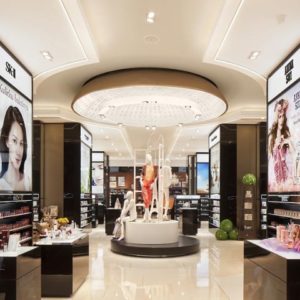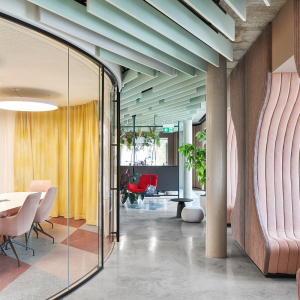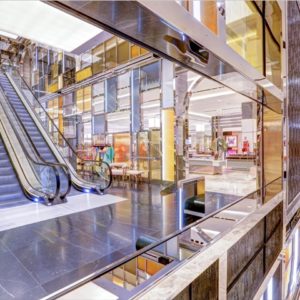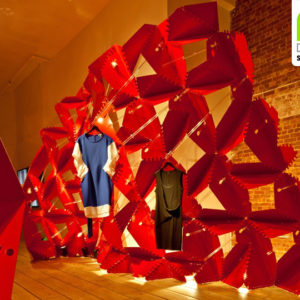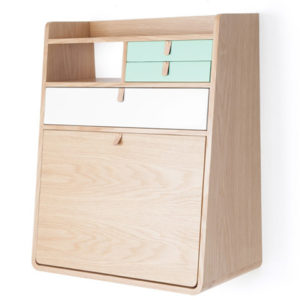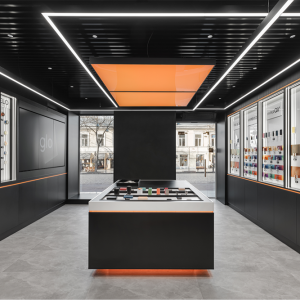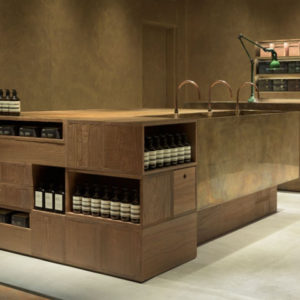
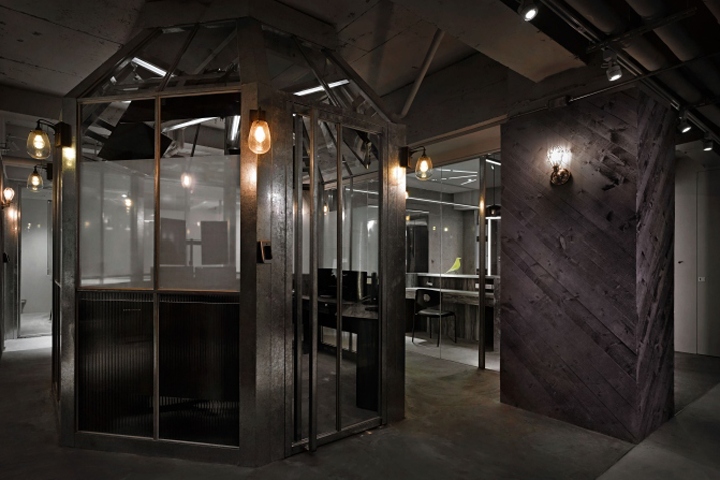

ANS head office is in the practice of defining the “near future style” with a simple vision that revolves around the future of humans in the respective space. Upon first seeing the rough housing with strong geometric lines and corners, the central light box clearly appears as the heart of the whole office. It is located in the center of the office and is used as a confidential dealing room. The glass with galvanized iron bars creates the outline of an octagon to radiate the symmetrical center of a circle into the entire space. To achieve visual geometric tension, other elements, such as the basic configuration of the pipework, shall be extremely neat and orderly.
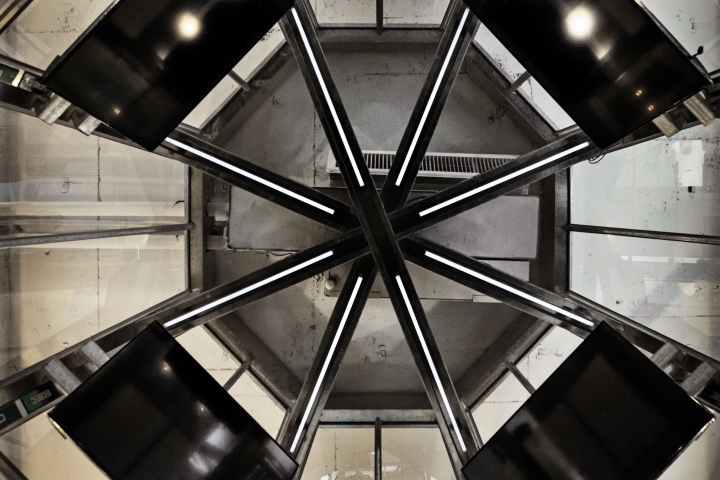
The initial space should feel like white paper, and the galvanized iron draws out the profound array in order to spray the gradation and strength of the lines. The raw materials are used to construct the high and cold frame of the space, with few colors, different depths of cement, types of wood veneer, golden, green, black, white, and grey shades, with a minimum of colors to segment the different ranks, functions, and characteristics of the office areas. After integrating the “human” element, the space vocabulary seems cold and hard, but has a flowing feeling. In an office space of the near future, interaction is not the theme, but instead, a chemical reaction must occur for practical daily use.
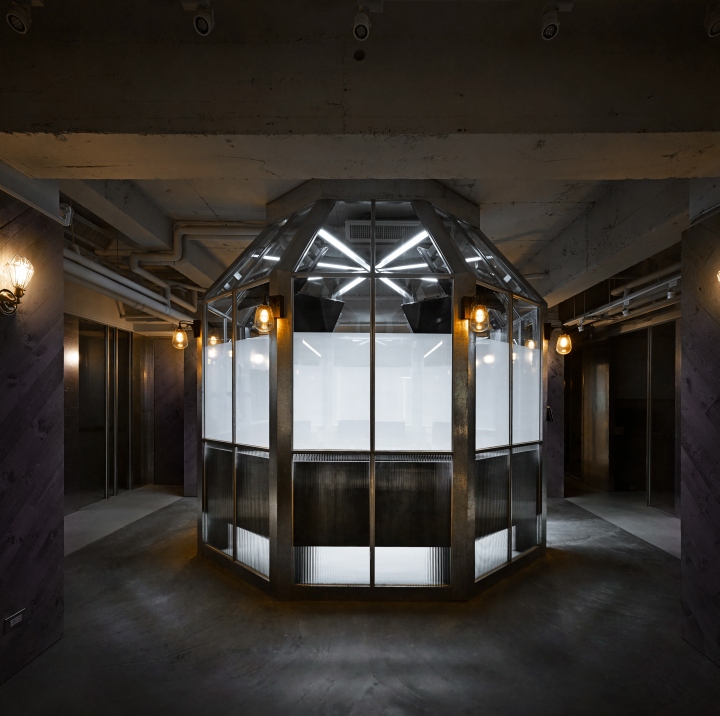
Humans and space, space and environment, and environment and materials all rely on one another in an interdependent system. Our time is full of surplus, applyingon and processing the material, pursuing and polishing it to an elegant finish, and adding and developing its functions. From this moment in time, while we reconsider the work field as it reflects futurity, we respond by returning to innocence. Complying with and conserving the environment improves the space’s style, which is a significant connotation with which we want to endow the ANS office. The near future style shall promote the interaction of human and space through minimal design.

The original spatial state, including the nude-installed ceiling and self-leveling cement floor, as well as the changing nature of shadows and tree colors, creates a space that seemingly has no design. Furthermore, large amounts of rough raw materials, such as wood veneer, original iron pieces, and unadorned galvanized iron, are used to construct a slightly scientific atmosphere. We simultaneously insisted on providing decorative touches in many details in order to create a unique “deliberately natural” feel with the raw materials and give the office a cool yet magnificent feeling with a little sense of conflict.
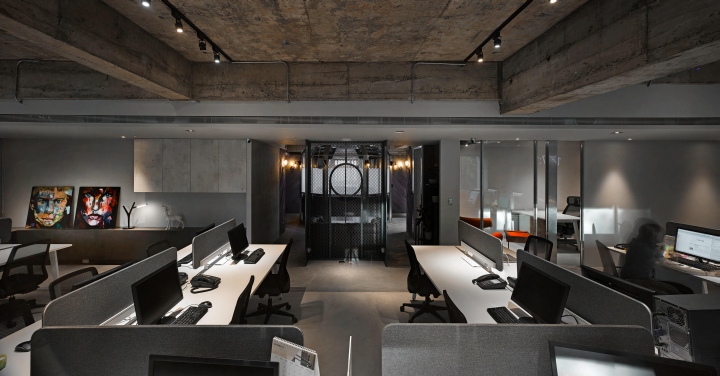
Upon entering, the user shall be incorporated into the atmosphere, and the clothing and interior design will interact with one another to complete the sense of value. Previously, humans have often imagined that the future would be full of high technology and a scientific atmosphere, along with astonishing automation convenience, which breaks the link with the space and causes people to lose self. We have designed the ANS head office to make people rethink the relationships among humans, work, and space; the space shall be a vessel that responds to need, while the people that fill the office are the element that truly reflect style and character.
Design: Ahead Concept
